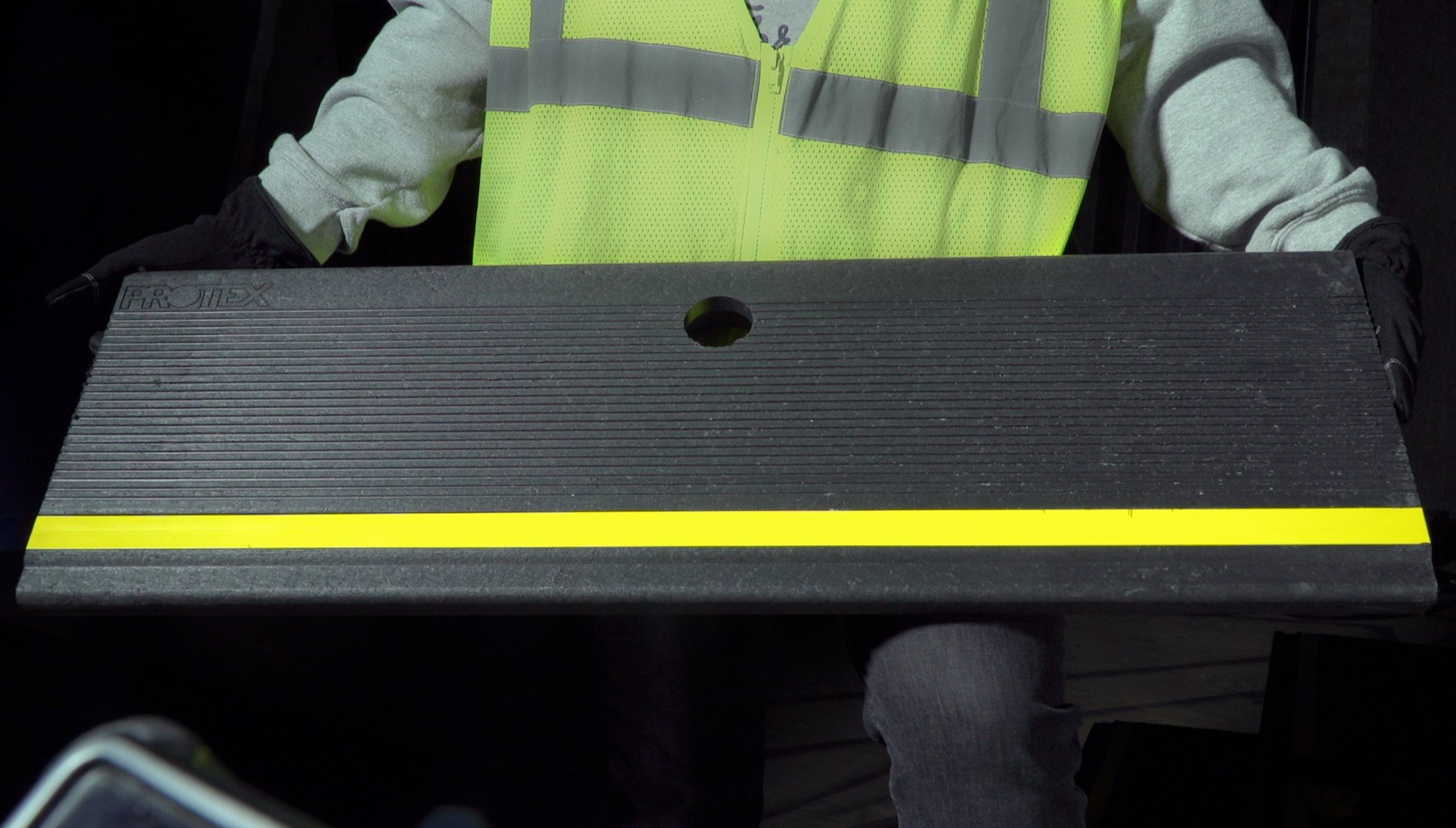
SAFETY STANDARDS
TREADX MEETS OR EXCEEDS ALL STAIR SAFETY STANDARDS
THE NEW STANDARD IN JOB-SITE STAIR SAFETY
TREADX is the only temporary stair pan treads that meet or exceed OSHA, ANSI, NFPA, IBC and many other safety standards
The following requirements apply to all Temporary Service Stairways as indicated:
(b)(1) - Except during stairway construction, foot traffic is prohibited on stairways with pan stairs where the treads and/or landings are to be filled in with concrete or other material at a later date, unless the stairs are temporarily fitted with wood or other solid material at least to the top edge of each pan. Such temporary treads and landings shall be replaced when worn below the level of the top edge of the pan
(b)(2) - Except during stairway construction, foot traffic is prohibited on skeleton metal stairs where permanent treads and/or landings are to be installed at a later date, unless the stairs are fitted with secured temporary treads and landings long enough to cover the entire tread and/or landing area.
(b)(3) - Treads for temporary service shall be made of wood or other solid material, and shall be installed the full width and depth of the stair.
29 CFR - 1910.144(a)(3) – Safety Color Code for Marking Physical Hazards
(a)(3) - Yellow. Yellow shall be the basic color for designating caution and for marking physical hazards such as: Striking against, stumbling, falling, tripping, and "caught in between."
Life Safety Code - Chapter 7 – Means of Egress
7.1.4.2 - New interior floor finish in exit enclosures, including stair treads and risers, shall be not less than Class II in accordance with Section 10.2.
7.1.6.4 - Walking surfaces shall be slip resistant under foreseeable conditions. The walking surface of each element in the means of egress shall be uniformly slip resistant along the natural path of travel.
7.2.2.3.3.2 - Stair treads and landings shall be free of projections or lips that could trip stair users.
Life Safety Code - Chapter 12 – New Buildings
12.2.5.6.9.1 - A contrasting marking stripe shall be provided on each tread at the nosing or leading edge so that the location of such tread is readily apparent, particularly when viewed in descent.
12.2.5.6.9.2 - The marking stripe shall be not less than 1 in. (25 mm) wide and shall not exceed 2 in. (51 mm) in width.
12.3.3.5.2 - Interior floor finish in exit enclosures and exit access corridors and in spaces not separated from them by walls complying with 12.3.6 shall be not less than Class II.
ANSI – A1264.1 - Safety Requirements for Workplace Walking / Working Surfaces
6.7 Slip Resistance - All treads shall be made of slip resistant material ANSI Z535.1-2017 – Safety Colors
6.3 Safety Yellow - Solid Yellow (Yellow and Black Stripes) shall be used for maximum contrast with the particular background. Safety Yellow is to be used for marking physical hazards which might result in striking against, stumbling, falling and tripping.
ASTM F1637 - Standard Practice for Safe Walking Surfaces
4.1.13 - Walkway surfaces shall be slip resistant (and under certain conditions) shall contain cross cut grooving to render the surface slip resistant.
5.2 - Walking surface hardware.....shall be maintained slip resistant
5.3 - Walking surface hardware shall be installed and maintained so as to be stable under loading
6.1.2 - Step nosings shall be readily discernible, slip resistant and adequately demarcated
International Building Code - Chapter 10 - Means of Egress
1003.4 – Floor Surface - Walking surfaces of the means of egress shall have a slip resistant surface and be securely attached
1011.5.4 - Dimensional Uniformity - Stair treads shall be of uniform size and shape.
1011.7.1 - Stairway Walking Surface - Stairway treads shall have a solid surface.
1029.13.2.3 – Tread Contrasting Marking Stripe - A contrasting marking stripe shall be provided on each tread at the nosing such that each tread is readily apparent when viewed in descent. Such stripe shall be not less than 1” and not more than 2” wide.





